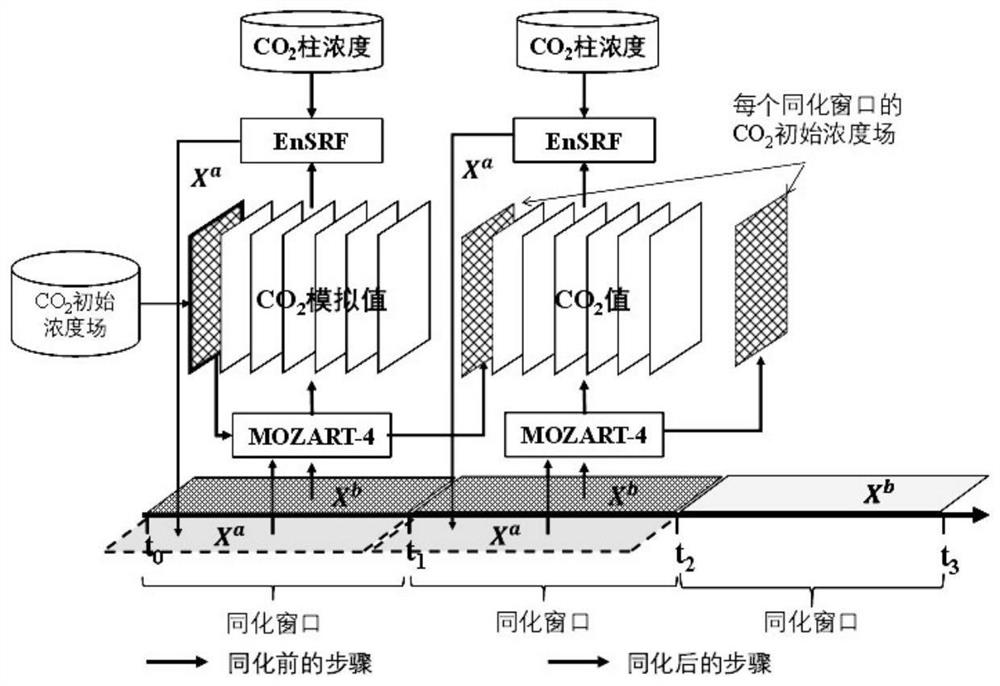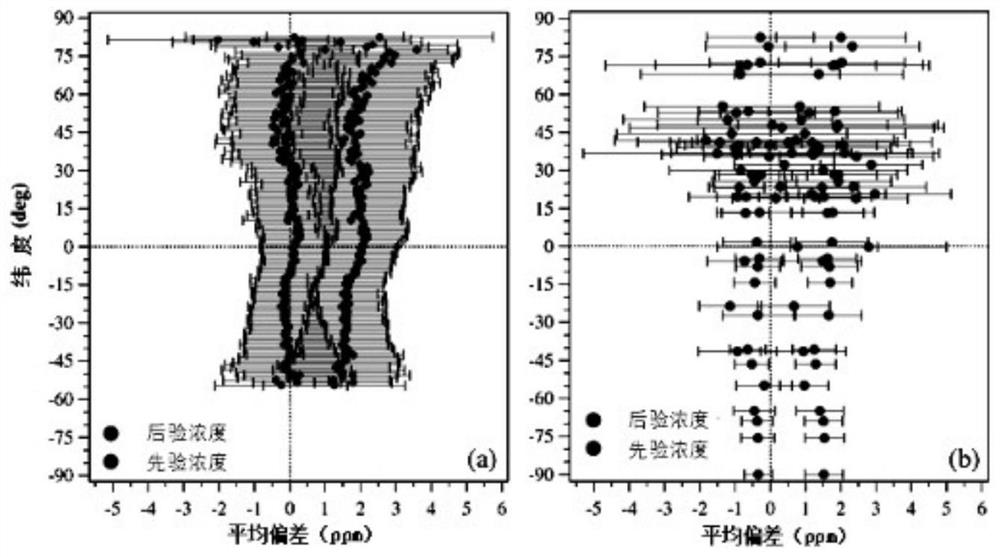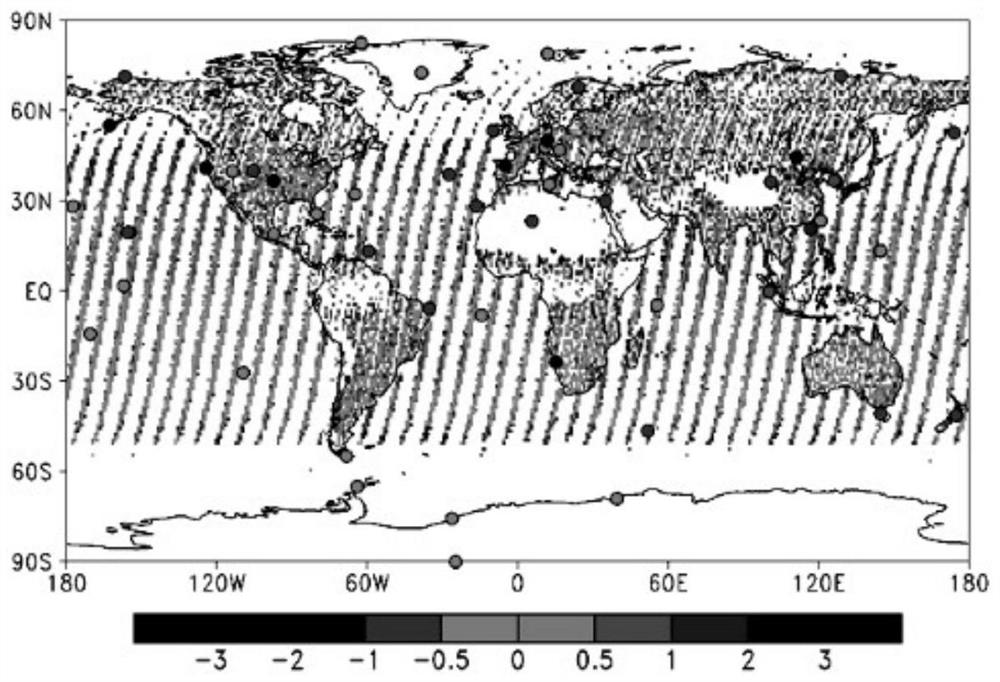Method for observing and inverting surface carbon flux based on satellite CO2 column concentration
A carbon flux and column concentration technology, applied in the field of climate change, can solve the problems of uneven distribution and large uncertainty, and achieve the effect of correcting carbon flux errors and simulation accuracy
- Summary
- Abstract
- Description
- Claims
- Application Information
AI Technical Summary
Problems solved by technology
Method used
Image
Examples
Embodiment
[0054] From January 2010 to December 2015, the assimilation system carried out the inversion of global terrestrial ecosystem, ocean carbon flux and anthropogenic carbon emissions, and its annual prior uncertainties were set to 100%, 40% and 20%, respectively. Uncertainties for factor γ were set to 3, 5 and 0.5, respectively. Assimilated XCO 2 The observation data is the product of GOSAT ACOS v7.3. A priori and a posteriori fluxes were used for CO 2 Concentration simulations verify the assimilation effect by comparing with observations.
[0055] figure 2 Zonally averaged XCO is shown 2 Simulated bias at different latitudes. with GOSAT XCO 2 Retrieval is compared, essentially, at different latitudes, to a priori XCO 2 The zonal mean deviations are all greater than 1ppm, and the global mean is 1.8±1.3ppm (mean±standard deviation), but for the posterior XCO 2 , most mean deviations are within ±0.5ppm, with a global average of -0.0±1.1ppm. Simulation and GOSAT retrieved X...
PUM
 Login to View More
Login to View More Abstract
Description
Claims
Application Information
 Login to View More
Login to View More - R&D
- Intellectual Property
- Life Sciences
- Materials
- Tech Scout
- Unparalleled Data Quality
- Higher Quality Content
- 60% Fewer Hallucinations
Browse by: Latest US Patents, China's latest patents, Technical Efficacy Thesaurus, Application Domain, Technology Topic, Popular Technical Reports.
© 2025 PatSnap. All rights reserved.Legal|Privacy policy|Modern Slavery Act Transparency Statement|Sitemap|About US| Contact US: help@patsnap.com



